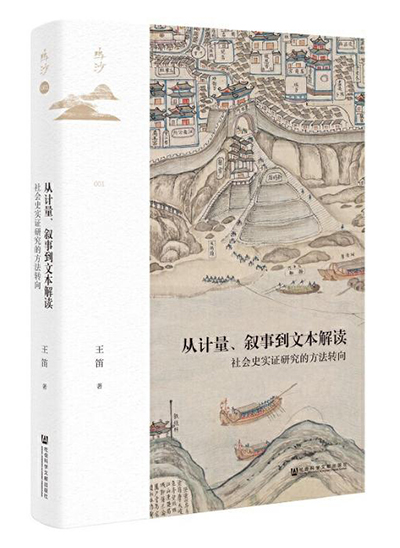Ethical literary criticism matures

The Methodological Turn of Social History Empirical Research: Measurement, Narrative and Textual Interpretation
The prosperity of Western new cultural history and the trend of concentrating on cultural turns has had a profound impact on historiography. The study of Chinese social history has thus focused on cultural turns.
Authored by Wang Di, director of the Department of History at the University of Macau, The Methodological Turn of Social History Empirical Research: Measurement, Narrative and Textual Interpretation begins with data and social structure analysis, transitions to an in-depth description of people’s daily lives, and then commits to multi-angle interpretations of historical texts. This reflects the transformation of a historian’s research path—the return from social science methods to methods from the humanities and the reorientation of multi-disciplinary research to include new cultural history, micro history, and anthropology.
In his early social history studies, Wang believed in the importance of population in the study of society. For example, he adopted a case study of Sichuan, a province with a relatively large population and agricultural production in the Qing Dynasty (1644–1911). Wang explored problems in population statistics and arable land quantities, as well as challenges brought by a population explosion at the time.
In his mid-career social history studies, Wang tried to break through traditional research paradigms on cultural history. He focused on the detailed narratives of daily lives, by combining historical narratives and an interpretation of historical data. He contended that streets are an important stage for people to engage in various activities such as earning a living, daily lives, and entertainment.
Each material format provides documentation and understanding of historical events and figures from different angles. In the past, “linguistic turns” and “narrative turns” were frequently mentioned when discussing the rise of new cultural history, but we rarely realized that a “pictorial turn” had occurred at the same time, which significantly affected the construction of a “bottom-up” historiography and focused on ordinary people and their daily lives. The author attaches great importance to the use of images. Visual materials are the most direct display of urban daily life and popular culture, revealing people’s use of and manifold poses in public space.
The author also reflects upon the study of “new” cultural history, pointing out the “new” aspects of Chinese history research: the change of research objects from heroes to ordinary characters; the change of research methods, especially influenced by anthropology. New cultural history studies have shifted people’s attention from elites to grassroots and from the center to marginal groups, expanding our understanding of history and allowing us to see the history of ordinary people. All of these have opened up new paths for the study of social history.
Zhang Ruikun is from the School of Journalism and Communication at Shaanxi Normal University.
Edited by YANG LANLAN

 PRINT
PRINT CLOSE
CLOSE